CASA BLOGS

‘There was slush everywhere’
“On the midnight of 16th August, my dog started howling briskly; alarmed, I went to see him and heard some unusual commotion outside. Within ten minutes and before I could apprehend the situation, floods broke out, unstoppable water along with mud came smashing everything,” narrated Tiju Samson, a resident of Munnar, Idukki district to CASA reporters.

By Md Mahfooz Alam
Intern | CASA Communications
Incessant rainfall is nothing new to Kerala, but the month of August this year received consistent heavy rainfall, with dams overflowing beyond its capacities. Left with no option, the authorities opened 35 dams which flooded all 14 districts of Kerala.
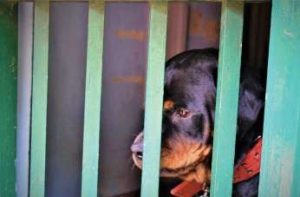
Photo (above) Tiju Samson explaining the damages caused by the landslides in Idukki district (below)Tiju Samson’s Rotweiller who alerted him on the night of the disaster.
Tiju Samson on further enquiry, elaborated, “Water was up to our neck, and mud houses were washed off because of landslides. People were evacuated and send to relief camps. I along with my brother and some other young people rescued many but sadly we couldn’t rescue Satish, his wife and their two children. They died trapped in their house, although we did save his mother.”
The damage to infrastructure has been mammoth – local houses, schools, colleges are completely submerged; roads are damaged; railways stuck and airports shut down. V G Suresh, a local resident recounts in pain, “I am living in my relative’s house. My house and all the belongings were washed away in the flood and I can’t reconstruct it without government aid. He further adds, “I have two school going daughters. Their study materials are completely destroyed – I am left with no resource to send them school again.”
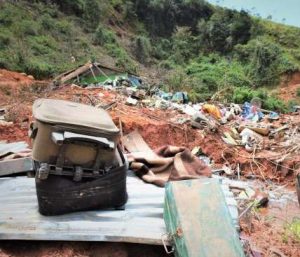 Farmers, fisherman and the daily wage workers are in miserable state. Soman from Kuttanad said, “The basic necessities of livelihood – agriculture, livestock and boats are lost; the paddy and banana fields are submerged in water, fisherman are out of job.”
Farmers, fisherman and the daily wage workers are in miserable state. Soman from Kuttanad said, “The basic necessities of livelihood – agriculture, livestock and boats are lost; the paddy and banana fields are submerged in water, fisherman are out of job.”
One of the Panchayat Presidents said, “There is no potable water because the supply is cut off and there is severe hygiene and sanitation problem. The water is still stagnant in the houses which may lead to water borne diseases.”
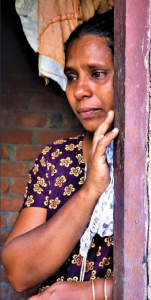
The woman in the photograph is a resident of Kottayam district whose house was washed away in the floods. Presently, she is staying at her mother’s house which was also partly damaged in the August deluge. Upon asking
why they were continuing living in a vulnerable house, her mother revealed, “We tried living in the relief shelters but other residents were not comfortable sharing the same roof with my daughter as her mental health condition is not stable. She gets recurrent flashbacks of her house being washed away in the floods, and that makes her emotionally
unstable and restless. We had to come back to this house as we have no other place to live.”
– The interviewees didn’t wish to be named
 Previous Blog Post Mending The Gaps after the WORST CALAMITY IN NEARLY 100 YEARS
Previous Blog Post Mending The Gaps after the WORST CALAMITY IN NEARLY 100 YEARS CASA RESPONDS IN KERALA
CASA RESPONDS IN KERALAFeatured Post
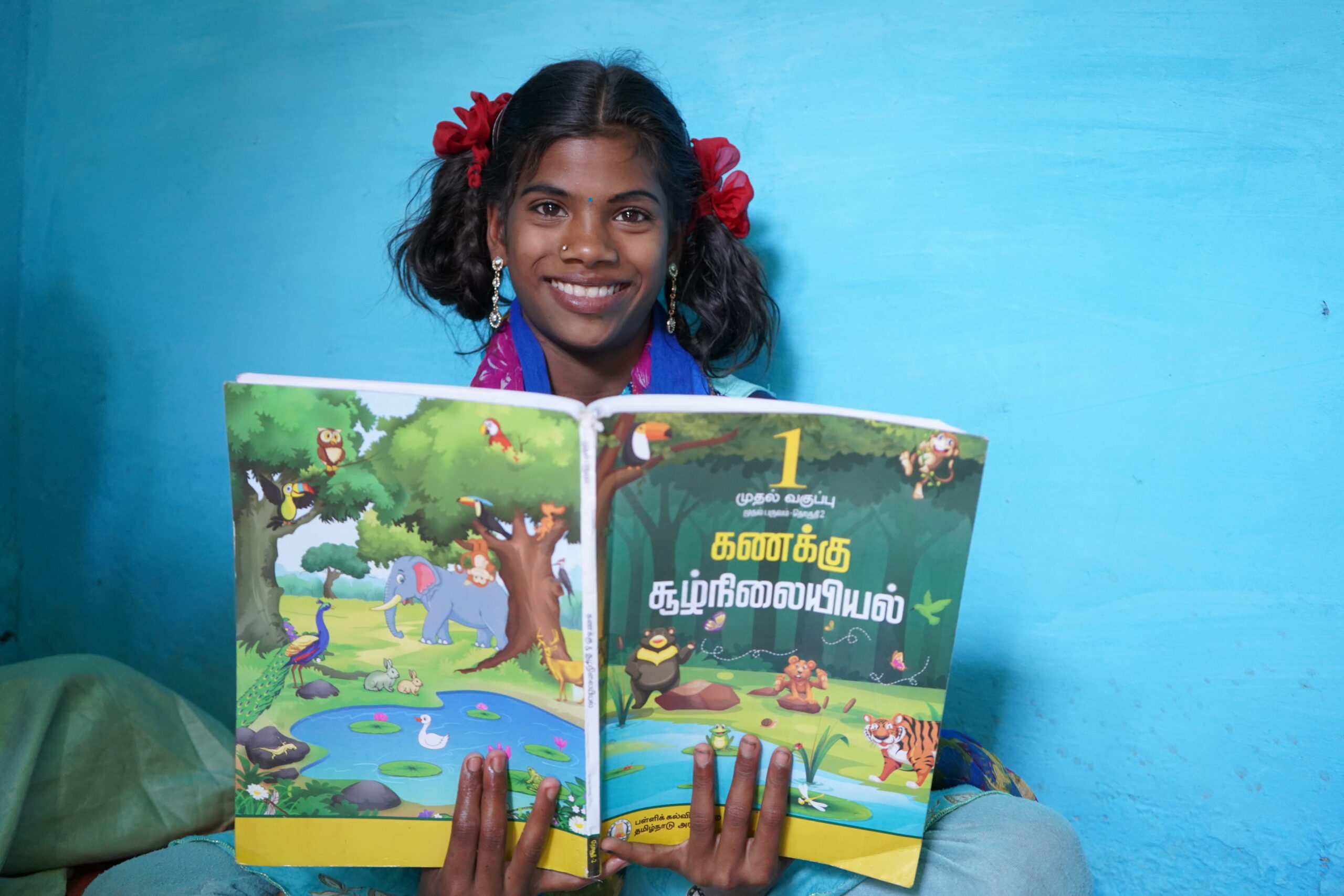
Empowering Rural Education in India:
14 Mar 2024
Introduction: In the vast tapestry of India, education is the key to unlocking the door to a brighter future. However, the challenge of providing quality education to the rural parts of the country persists. In this blog post, we will delve into the crucial role that Non-Governmental Organizations (NGOs) play in bridging the educational gap […]
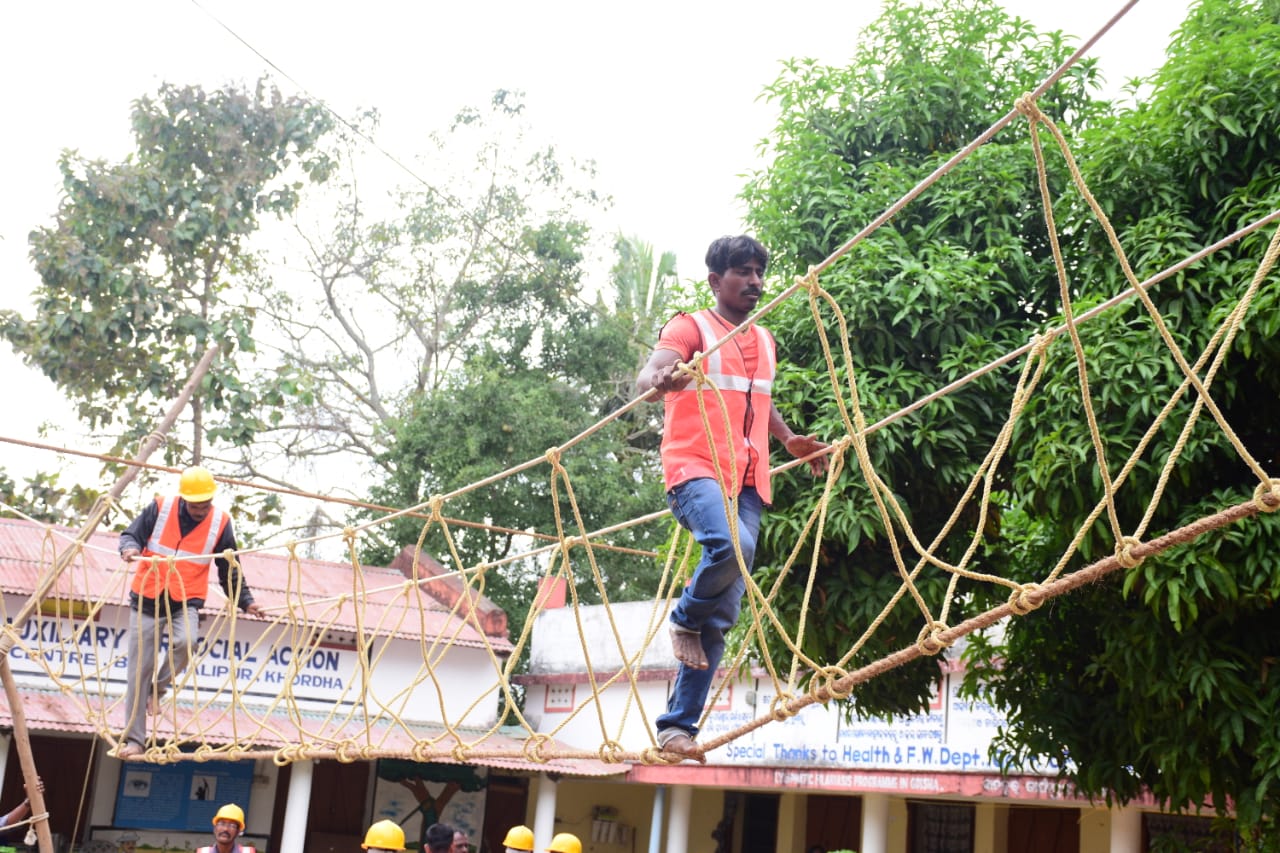
Empowering the Future: Disaster Management Training for School Children in Disaster-Prone Areas
22 Feb 2024
Introduction: In the face of increasing natural disasters worldwide, it becomes imperative to equip our younger generation with the knowledge and skills necessary to handle emergency situations. Children, being one of the most vulnerable groups during disasters, can greatly benefit from disaster management training. This blog explores the significance of imparting such training, with a […]
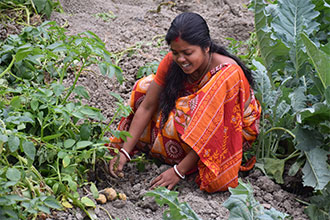
Empowering Women: Transforming Lives Through Sustainable Livelihoods in Rural India
16 Feb 2024
Introduction: In the heart of rural India, a silent revolution is taking place as women embrace newfound opportunities for sustainable livelihoods. This transformation not only uplifts individual lives but also contributes to the overall development of communities. At [Your Organization’s Name], we are committed to driving positive change by providing women in rural India with […]


